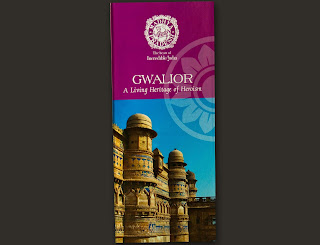A friend of mine thought that I might be of help to an Italian anthropologist who has come to the temple town to study the relation of the people here to the ancient structures here. Interestingly, my friend was partly right because the questions posed by her had been haunting me since a long time. To be 'somewhat' precise - it was 'somewhere' in 2006 - the year I first came to Varanasi. (the reason I put 'some what' and 'somewhere' would be explained later). But, the questions posed by her have given a new lease of life to my own haunting - and I have once again put my self to 'understand' the answers - if i could call them.
In order find some clues I went on to read a book I had kept for long:
India: A Wounded Civilization by
V. S. Naipaul. The book is full of scathing remarks which the author derives from his 'non-indifferent' outsider's detached experience of the country.
"India in the late twentieth century still seems so much itself, so rooted in its own civilization, it takes time to understand that its independence has meant more than the going away of the British; that the India to which Independence came was a land of far older defeat; that the purely Indian past died a long time ago.”
One wonders: Are the numerous religious people flocking at the temple buildings (now painted in bright coloured synthetic paints) least concerned about the antiquity or the great past of the buildings.
Much of what Naipaul says about an India of the past holds true for many parts of the country (for example Varanasi) even today, 65 years after independence:
"...subject people who had learned to live with the idea of Subjection. We lived within our lesser world; and we could even pretend it was whole because we had forgotten that it had been shattered. Disturbance, instability development lay elsewhere; we had lost our wars and were removed from great events, were at peace."
People in Varanasi too seem to be at peace. It's not just Varanasi. As VSN goes on to say,
"Subjection flattened, made dissimilar places alike" [Perhaps
Thomas L Friedman should consider adding another flattener to his list in the book
The World is Flat]. There could be numerous examples in India for cities, towns and villages 'at peace'.
VSN tries to figure out the origin of this 'peace' with the help of his interpretations from R K Narayan's book
Mr Sampath which he describes as an intense Hindu fable.





